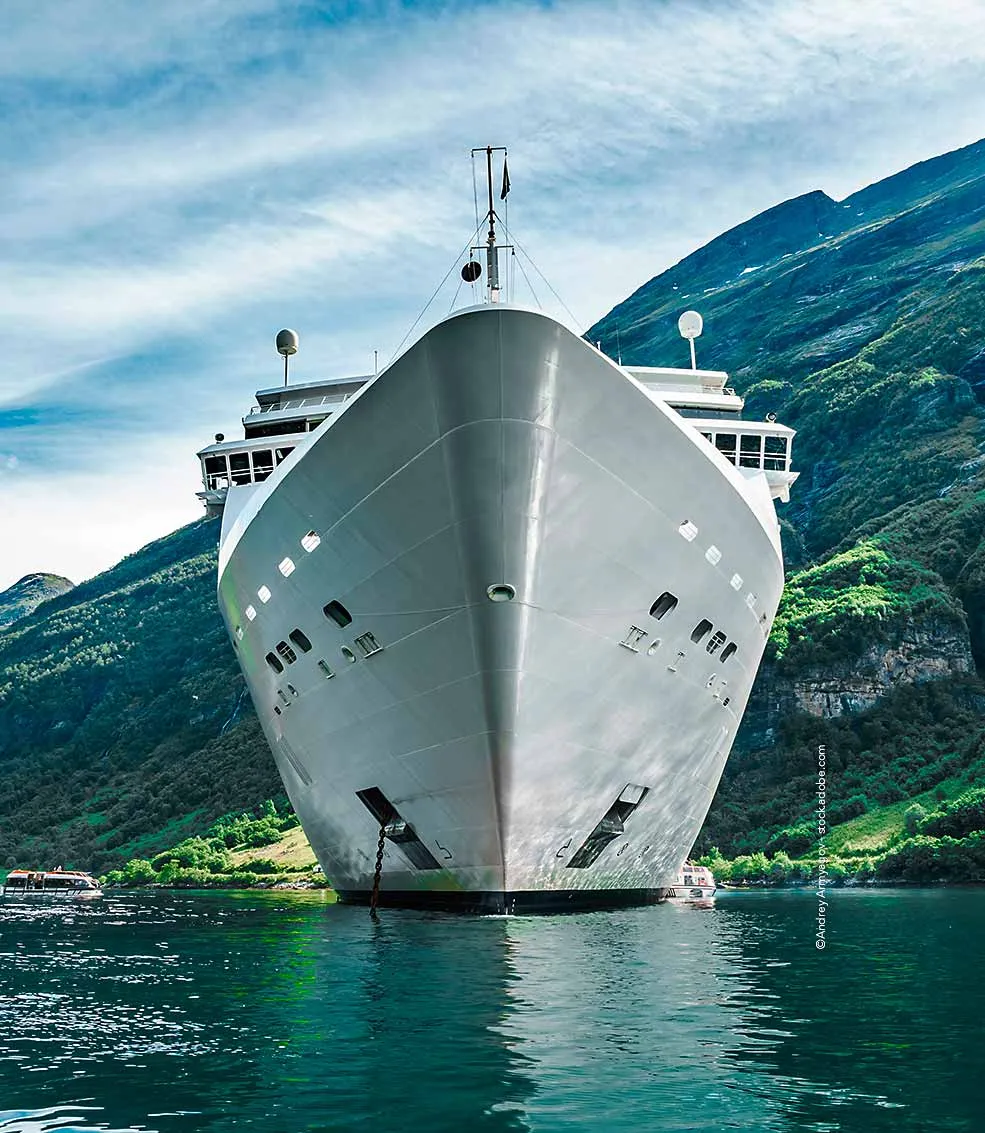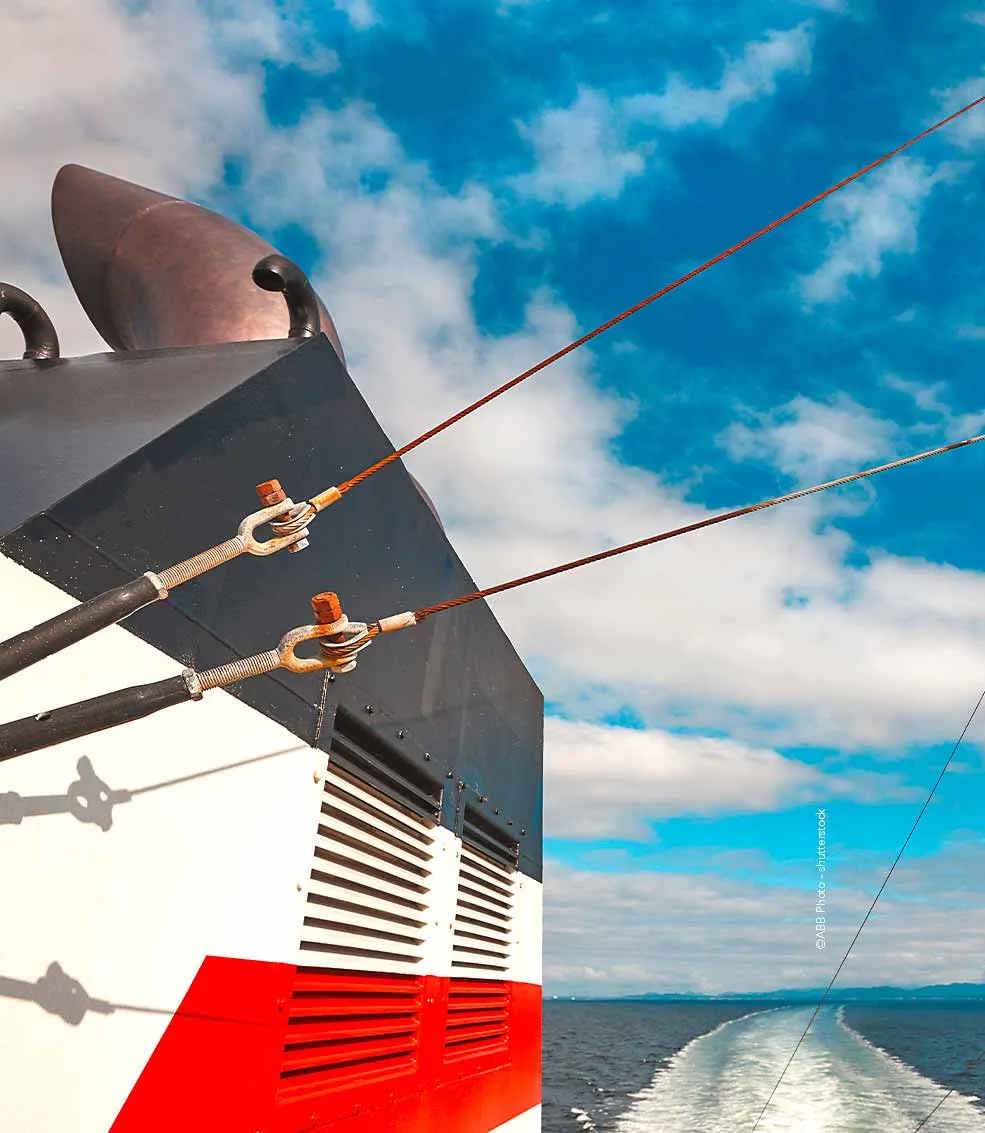Navigating the regulatory environment
With the urgency of environmental concerns increasing around the world, exhaust gas emissions for cruise ships are not only subject to tightening IMO regulations but also to new, local efforts to protect vulnerable ecosystems. A look at the current and future restrictions.
With their stunning visual landscapes Norwegian fjords are highly attractive cruise destinations. The growth in traffic has been significant over the last years and has led to an increasing focus both in the media and amongst regulators on the environmental impact the cruise industry is having on destinations.
On 1 March the Norwegian Maritime Authority announced new environmental regulations imposing stricter requirements on cruise ships operating in the Norwegian World Heritage Fjords.

Emission-free operation in Norwegian World Heritage Fjords
The regulations are intended to significantly reduce this impact. In a broader perspective the changes are seen by key policy makers as stepping stones towards fully emissions free operation of cruise ships in the World Heritage Fjords by 2026, as has been agreed politically by the Norwegian Parliament.
The requirement with the most immediate impact is that all ships as of 1 March must either operate on 0.10%S-compliant fuels or use a scrubber operating in closed mode. Water discharge from scrubbers is prohibited. An anti-vapor plume device is also required to be used when operating a scrubber. Despite being imposed on short notice these requirements are generally seen as manageable and will have limited operational consequences.

Tier III compliance by 2025
But in a slightly longer time perspective the new NOx requirements will pose the most significant challenge for cruise ships operating in these fjords: whether newbuild or not, they must be Tier I-compliant by 2020, Tier II-compliant by 2022 and Tier III-compliant by 2025. As in some cases itinerary planning and ticket sales for the 2020 season are well under way, operators must make sure the relevant ships are or can be made at least Tier I-compliant to enter the fjords in question.
Considering the 2022 and 2025 requirements and since retrofitting NOx control technology is not an option for most cruise ships in service, operators must take a long hard look at their fleets so they can satisfy both customer demand for visiting these fjords and the environmental restrictions they face. Most cruise ships afloat today certainly are not and will not be made Tier III-compliant. The impact on itinerary planning will be significant.
The new regulations also ban the use of incinerators and the discharge of black and grey water. Ships must have environmental instructions on board for inspection by Port State Control. The Norwegian Maritime Authority has been tasked with assessing the potential for extending similar regulations to other Norwegian waters.

Municipal and port initiatives in Norway
Apart from these government measures, thirteen ports and municipalities in Norway including nearly all key cruise ship destinations are jointly developing a policy outlining 14 key environmental and operational control measures they wish to establish. These include e.g. applying World Heritage Fjord SOx and NOx restrictions to cruise ships operating in all Norwegian fjords and ports; mandating the use of shore power from 2025; and using financial rewards and fines to encourage improved environmental performance.
Furthermore, there are plans to impose zero-emission requirements on all cruise ship service providers in ports, and to change the legal framework so that ports can impose restrictions on the number of passengers and ships calling per day. These efforts, while still awaiting appropriate legislative action, are likely to have real operational consequences over the coming years.

Final agreements for 0.50% sulphur cap expected
The Marpol Annex VI 0.50% sulphur cap coming into force on 1 January 2020 is the biggest regulatory topic for 2019 and, most likely, 2020. The IMO is establishing frameworks, guidelines and supporting mechanisms to ensure smooth implementation. MEPC 74 in May 2019 is expected to deliver the necessary agreements, such as appropriate changes to Annex VI, updated Port State Control guidelines, guidance and updates on the Fuel Oil Non-Availability Reporting (FONAR) mechanism, and new guidelines on the consistent implementation of the 0.50% sulphur limit including guidance on shipboard implementation planning.

Discussions on open-loop scrubber water discharge
MEPC 74 will also be discussing the acceptability of open-loop scrubber water discharge. Recent local restrictions (e.g. Singapore, Chinese ports, Fujairah, Belgium, parts of Germany, etc.) have led to proposals to reopen the discussion on scrubbers at IMO. No fundamental decisions are expected at MEPC 74, and substantial discussions will not start until 2020. It will take time for IMO to come to grips with the underlying science and reach consensus on how to proceed. Considering the potentially far-reaching commercial implications, IMO will probably proceed with caution.

Greenhouse gas (GHG) challenge
Looking into the longer-term environmental impacts of shipping MEPC 74 is also expected to get to grips with the follow-up of its agreement on a GHG strategy for ships at MEPC 72. While the ultimate vision is full decarbonization of shipping within this century, with an intermediate goal of 50% reduction compared with 2008 by 2050, there is an urgent need to agree on initial short-term measures that can become effective before 2023.
MEPC 74 will need to work out agreements on short-term measures that will start shipping on the necessary reduction trajectory. To bypass the challenges associated with passing entirely new regulations, MEPC is likely to focus on amending existing ones, such as the EEDI and the SEEMP. More ambitious EEDI targets are to be expected, possibly along with more and tighter SEEMP requirements including some form of an approval and verification scheme. There will also be a focus on the necessity of research and development, in particular regarding the development and industry-wide rollout of carbon-neutral fuels, a prerequisite for reaching the 2050 reduction goals.
The sheer scope of the GHG challenge cannot be underestimated. Within a ship generation, technology needs to develop to a point where the GHG footprint of a vessel is reduced by nearly an order of magnitude.
DNV GL takes its responsibility very seriously to guide and inform its customers in a timely fashion, believing that this industry, indispensable for world trade and prosperity, will ultimately succeed in navigating its way into a safer and more sustainable future.
Contact us

